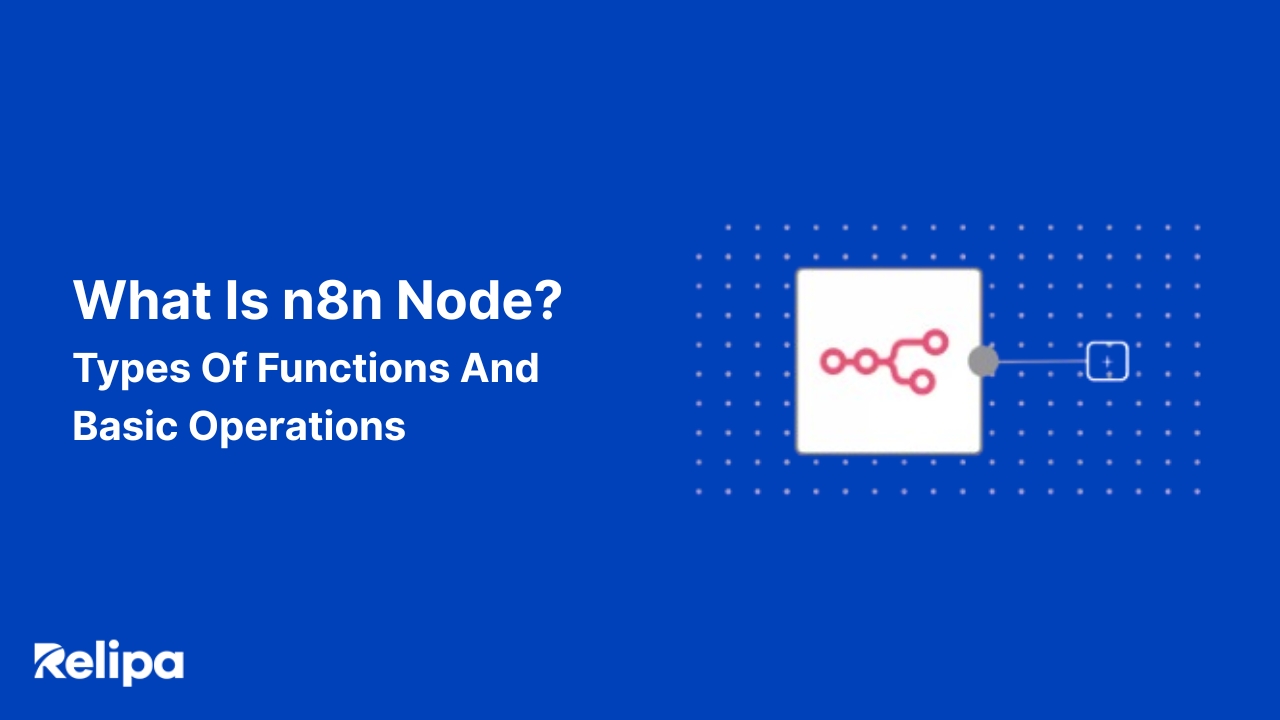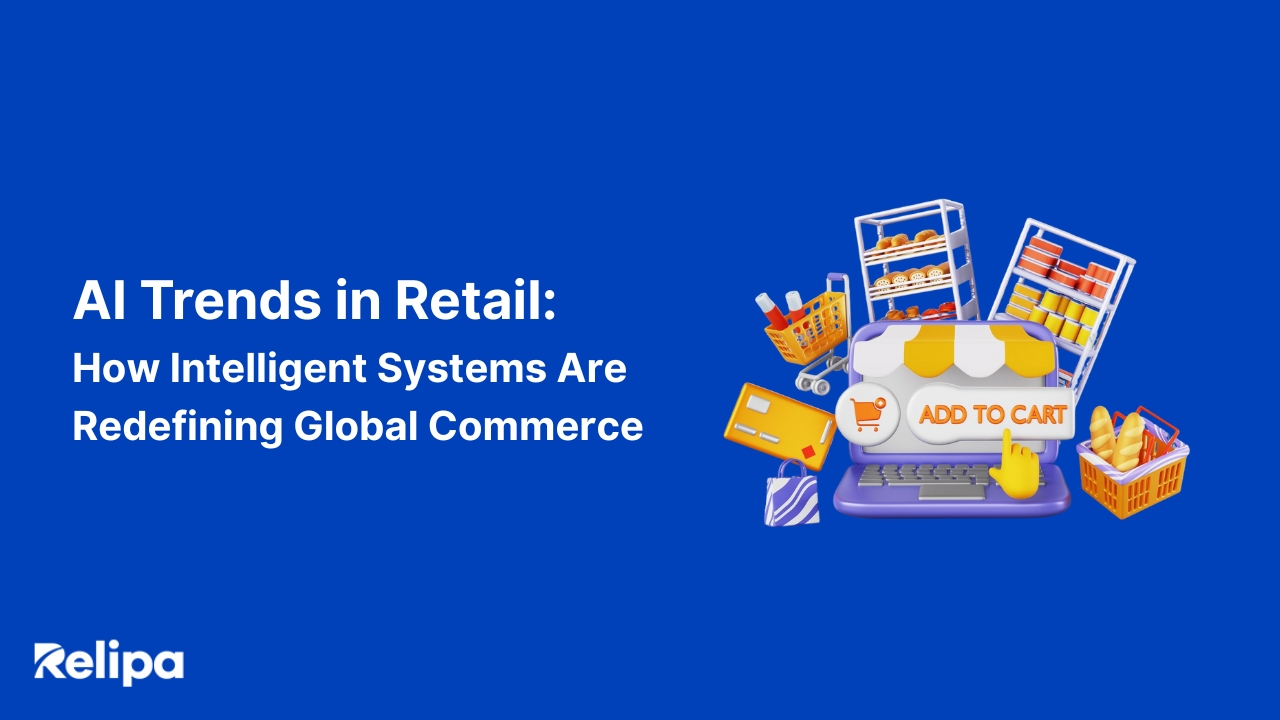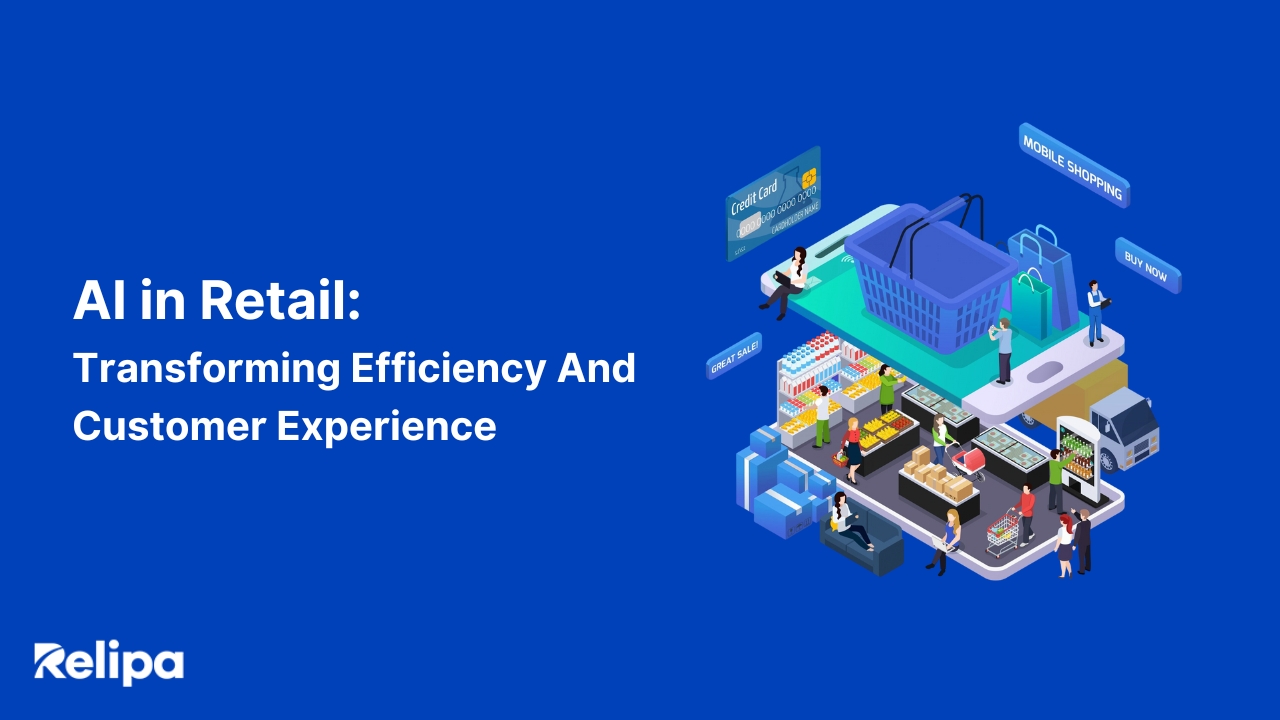Blockchain Technology In Finance: Transforming The Financial Landscape
For decades, global finance has been built on trust to safeguard deposits, in clearinghouses to process trades, and in central authorities to maintain stability. But this trust-based model comes with high costs: slow cross-border transfers, complex reconciliations, and heavy reliance on intermediaries.
Blockchain technology in finance offers a path forward. Instead of relying on centralized databases, blockchain enables financial institutions to share a single, tamper-proof source of truth. Every transaction is recorded across a distributed network, making data transparent and nearly impossible to alter.
This blog takes a closer look at how that shift is unfolding. You’ll discover what blockchain in financial services truly means, how it’s being implemented across banking, payments, and capital markets, and the real advantages and challenges it brings. Finally, we’ll explore what the future of blockchain in finance could look like, and why the technology’s biggest impact may still be ahead.
The Current Landscape of Blockchain Technology in Finance
Over the past few years, blockchain has quietly evolved from an experimental concept into a core layer of global finance. According to Deloitte’s 2024 Global Blockchain Survey, more than 83% of financial executives said blockchain is either a “top-five strategic priority” or already integrated into operations. Major players such as J.P. Morgan, Goldman Sachs, HSBC, and Visa are no longer testing isolated pilots, they are deploying live blockchain-based platforms to manage settlement, liquidity, and identity verification.
In payments and settlements, blockchain networks are solving one of the industry’s biggest pain points: slow, costly cross-border transfers. RippleNet, for example, enables real-time global transactions for more than 55 countries and over 100 markets. Meanwhile, J.P. Morgan’s Onyx platform has processed more than $1.5 trillion in blockchain-based transactions since its 2020 launch.
At the policy level, regulators and central banks are also embracing distributed ledger technology (DLT). The Bank for International Settlements (BIS) reports that over 90% of central banks are actively researching or developing Central Bank Digital Currencies (CBDCs), many of which run on blockchain frameworks (BIS Survey 2024). Projects like mBridge (linking the Hong Kong Monetary Authority, People’s Bank of China, Bank of Thailand, and UAE Central Bank) are testing cross-border settlements using tokenized fiat currencies.
Advantages of Blockchain Technology in Finance
Enhanced Transparency and Traceability
One of the most powerful benefits of blockchain technology in finance is the transparency it introduces to traditionally opaque systems. Every transaction is recorded on a shared ledger visible to all authorized participants, creating a permanent, tamper-proof record. This visibility drastically reduces opportunities for fraud, double-spending, or data manipulation.
According to the World Economic Forum (2023), blockchain could save financial institutions up to $12 billion annually by minimizing reconciliation and compliance costs through shared ledgers (WEF Report). Auditors and regulators can also benefit from real-time visibility into transactions, cutting down on manual checks and increasing accountability across the ecosystem.
Greater Efficiency and Cost Reduction
Traditional financial systems rely on multiple intermediaries, clearinghouses, custodians, and correspondent banks, each maintaining their own databases. This fragmentation creates delays, redundant work, and higher operational costs. Blockchain eliminates these bottlenecks by allowing participants to access and verify transactions on a single, synchronized ledger.
A Santander and Accenture joint study projected that blockchain could help banks save between $15 billion and $20 billion annually by simplifying infrastructure, reducing settlement times, and cutting back-office costs (Accenture, 2024). For example, Visa B2B Connect enables direct, blockchain-powered payments between banks across more than 100 markets, significantly reducing transaction friction and time.
Stronger Security and Data Integrity
Blockchain strengthens security through cryptography and decentralization. Each block is securely linked to the previous one via hash functions, making unauthorized data alteration nearly impossible. Because records are distributed across multiple nodes rather than stored in a central server, blockchain networks are far more resilient to cyber attacks and single points of failure.
Institutions such as BNY Mellon and Standard Chartered have adopted blockchain-based custody and trade finance solutions to enhance transparency and minimize fraud risks. Moreover, blockchain’s cryptographic design ensures that sensitive financial data can be verified without exposing it, an essential feature in an age of rising cyber threats and data breaches.
Improved Liquidity and Access to New Financial Instruments
Beyond operational improvements, blockchain enables new forms of asset ownership and liquidity. Through tokenization, real-world assets, such as bonds, equities, or real estate, can be digitally represented and traded 24/7 on blockchain networks. This democratizes access to investment opportunities and allows for fractional ownership, meaning smaller investors can participate in markets once reserved for institutions.
For instance, BlackRock has been exploring tokenized funds on the Ethereum network, while HSBC launched blockchain-based platform for issuing digital bonds. According to Boston Consulting Group (2024), the tokenization market could reach $16 trillion by 2030, highlighting how blockchain is unlocking liquidity and redefining financial markets (BCG Group).
Challenges of Blockchain Technology in Finance
Regulatory Uncertainty
The lack of consistent global regulation is one of the most significant barriers to scaling blockchain in financial services. While some jurisdictions such as Singapore and the European Union, have introduced clear frameworks like the MiCA Regulation (Markets in Crypto-Assets), others remain ambiguous or fragmented. This regulatory inconsistency makes it difficult for institutions to launch or scale blockchain solutions that involve tokenized assets, cross-border settlements, or decentralized finance (DeFi). According to the OECD’s 2024 Blockchain Policy Forum, 64% of surveyed financial institutions cited unclear regulatory environments as the top factor slowing adoption (OECD, 2024).
To address this, international coordination is becoming crucial. Global entities such as the Financial Stability Board (FSB) and the International Organization for Standardization (ISO) are developing frameworks to unify digital asset standards, while local regulators are experimenting with regulatory sandboxes to safely test blockchain-based products. These efforts aim to provide legal clarity while maintaining innovation, allowing banks, fintechs, and governments to adopt blockchain with confidence and compliance.
Scalability and Performance Limitations
Despite blockchain’s efficiency in reducing intermediaries, scalability remains a critical bottleneck. Legacy financial systems process thousands of transactions per second, while leading public blockchains such as Ethereum handle 15-20 TPS, and Bitcoin only 7 TPS. This stark contrast makes real-time trading, instant payments, and high-volume clearing nearly impossible on-chain. The Visa network, by comparison, supports up to 65,000 TPS, highlighting how far blockchain networks need to evolve. Additionally, network congestion leads to high transaction fees, during Ethereum’s peak activity in 2023, average gas fees surged over $60 per transaction, reducing the practicality of mass-scale adoption.
The path forward lies in Layer 2 scaling solutions and hybrid blockchain architectures. Technologies like Optimistic Rollups, zk-Rollups, and sidechains compress transactions off-chain before recording final results on the main network, dramatically improving throughput while maintaining security. Permissioned blockchain models used by institutions such as J.P. Morgan’s Onyx or Citi’s DLT trade finance pilot also demonstrate how private networks can handle enterprise-grade volume efficiently. These advancements are gradually bridging the gap between blockchain’s decentralized ideas and the speed required for institutional finance.
Security and Smart Contract Risks
While blockchain itself is cryptographically secure, vulnerabilities often emerge from the layers built on top of it, particularly smart contracts and custody systems. Exploits in poorly audited contracts have led to billions in losses: Chainalysis’ 2024 Crypto Crime Report estimated over $2 billion lost in DeFi hacks in 2023 alone. Unlike traditional finance, where there are mechanisms for dispute resolution or chargebacks, blockchain transactions are irreversible once executed, meaning even minor coding errors can have catastrophic financial consequences.
The solution lies in strengthened security protocols and governance mechanisms. Financial institutions are using formal verification (mathematically providing contract logic)and third-party auditing to identify vulnerabilities before deployment. Zero-knowledge proofs (ZKPs) and multi-party computation (MPC) are also being adopted to enhance privacy and reduce exposure of sensitive data while preserving verifiability. Furthermore, new insurance models and decentralized audit marketplaces are emerging to cover smart contract risks, reflecting how blockchain security is maturing alongside its adoption.
Interoperability and Integration Barriers
The financial ecosystem relies on seamless communication between systems, something blockchain still struggles with. Today, hundreds of blockchain networks operate in isolation, each with its own standards and consensus mechanisms. This fragmentation limits liquidity and creates friction for institutions needing to transfer assets or data across platforms. According to a Gartner report (2024), over 80% of enterprise blockchain projects cite interoperability as a top concern preventing cross-network collaboration.
Solutions are emerging through cross-chain bridges, standardized APIs, and interoperability protocols such as Chainlink’s Cross-Chain Interoperability Protocol (CCIP), Polkadot’s parachain model, and Cosmos’ IBC (Inter-Blockchain Communication) framework. These technologies enable assets and data to move securely between networks, paving the way for integrated blockchain finance. In parallel, initiatives by groups like the ISO/TC 307 Committee aim to create universal standards that ensure compliance and compatibility across jurisdictions and platforms, a key step toward a truly connected financial blockchain ecosystem.
Real-world Applications of Blockchain Technology in Finance
Cross-border Payments and Remittances
Traditional cross-border transfers can take up to five days and incur high fees due to multiple intermediaries. Blockchain networks, however, allow value to move almost instantly with transparent traceability. For instance, RippleNet facilitates real-time settlements for financial institutions across 55+ countries, processing transactions in seconds rather than days. Meanwhile, Visa B2B Connect, which uses a private blockchain, has expanded to over 100 markets, streamlining institutional payments for global corporates.
These systems not only reduce transaction costs but also expand financial inclusion. By eliminating intermediaries, blockchain payments lower remittance fees, a critical benefit for developing economies. The World Bank estimates that blockchain-based remittances could cut global transfer fees by up to 50% saving migrants over $16 billion annually. This combination of affordability and transparency is helping millions access the global financial system with greater efficiency and trust.
Trade Finance and Supply Chain
Trade finance has long been plagued by paper-heavy processes, fraud risks, and a lack of transparency among counterparties. Blockchain is changing that by digitizing documentation, automating validation, and ensuring end-to-end visibility across trade transactions. Platforms like Contour, built on R3’s Corda blockchain, are used by over 20 international banks including HSBC, Standard Chartered, and Citi to issue and verify letters of credit digitally, reducing processing times from 5-10 days to less than 24 hours.
The impact extends beyond speed. By enabling shared data verification and tamper-proof recordkeeping, blockchain minimizes fraud and compliance risks in multi-party trade deals. The World Economic Forum estimates that blockchain could increase global trade by $1.1 trillion by 2028 through improved transparency and efficiency. For banks, this means faster settlements and lower credit exposure, for businesses, it means greater trust and access to financing in a digitized trade ecosystem.
Asset Tokenization and Capital Markets
Blockchain is revolutionizing how assets are issued, traded, and owned. Through tokenization, financial institutions can represent real-world assets such as equities, bonds, or real estate on blockchain networks. This process enables fractional ownership, instant settlement, and programmable compliance. For example, BlackRock launched its tokenized money market fund on Ethereum in 2024, giving investors blockchain-based access to institutional-grade liquidity.
This shift toward tokenized markets could redefine liquidity and accessibility. Boston Consulting Group projects the global tokenization market to reach $16 trillion by 2030, representing 10% of global GDP. Tokenization reduces barriers for investors and allows institutions to issue, trade, and settle assets 24/7, transforming traditionally fragmented capital markets into a more open and efficient ecosystem.
Central Bank Digital Currencies (CBDCs)
Central banks are among the largest adopters of blockchain in financial services, as they explore Central Bank Digital Currencies (CBDCs) to modernize payment systems. According to the Bank for International Settlements (BIS), 93% of central banks are currently engaged in CBDC research or pilot programs, many leveraging blockchain or distributed ledger technology. Projects like mBridge, a collaboration among the central banks of China, Thailand, the UAE, and Hong Kong, are already testing cross-border settlements using tokenized fiat currencies.
CBDCs have the potential to streamline interbank transfers, improve monetary policy implementation, and enhance financial inclusion. By building programmable and traceable digital currencies on blockchain, central banks can ensure greater transparency in money flows while maintaining sovereignty and compliance. The success of early pilots signals that blockchain is not just a tool for private innovation but a cornerstone for the next evolution of global monetary systems.
Compliance and Anti-Money Laundering (AML)
Blockchain’s immutable and transparent ledger offers a way to automate Know Your Customer (KYC) and Anti-Money Laundering (AML) processes with greater accuracy. Projects like KYC-Chain and SelfKey allow institutions to verify customer identities securely on blockchain, reducing redundancy across organizations. The World Economic Forum reports that shared blockchain-based compliance systems could reduce AML and KYC costs by 30-50% industry-wide.
The advantage is twofold: improved risk management and cost efficiency. Instead of repeatedly collecting and validating data, financial institutions can rely on verifiable blockchain records that are updated once and reused many times. As regulators increasingly recognize the reliability of distributed ledgers, blockchain could become the backbone for a new era of automated, transparent, and cooperative financial compliance.
The Future of Blockchain Technology in Finance
From experimental to Essential Infrastructure
Blockchain has moved far beyond its crypto origins. What began as an experimental way to exchange digital coins is now emerging as a core infrastructure for the global financial system. Banks, asset managers, and payment networks are integrating distributed ledgers to handle settlements, identity, and compliance faster and more securely.
According to PwC’s “Time for Trust” report (2024), blockchain could add over $1.7 trillion to the world economy by 2030, with financial services contributing nearly 30% of that growth. This momentum signals a paradigm shift, blockchain is no longer a fringe innovation, but a foundational layer shaping how money and data flow across borders.
The Convergence of Blockchain, AI, and IoT
The real power of blockchain in finance will unfold when it merges with other emerging technologies. Artificial intelligence and the Internet of Things are natural complements, AI provides insight, IoT provides data, and blockchain provides trust.
Imagine a shipping container with IoT sensors that trigger an automated insurance payout the moment damage is detected, or an AI system that monitors blockchain transactions to prevent fraud before it happens. According to Deloitte’s 2024 Tech Trends Report, more than 60% of financial operations could include blockchain or AI-driven automation by 2035. This convergence could lead to a new kind of financial ecosystem, autonomous, data-driven, and self-verifying.
Institutional Integration and Global Standards
Blockchain’s future in finance depends on technology and collaboration. Financial institutions are already running pilot programs that point to large-scale adoption. For example, SWIFT’s 2024 blockchain interoperability pilot, involving more than 30 global banks, proved that tokenized assets can move seamlessly between networks.
Meanwhile, organizations like the ISO (TC 307) and Basel Committee are developing frameworks to standardize blockchain usage, covering interoperability, risk management, and compliance. These efforts are essential for ensuring that blockchain-based finance evolves under a unified, regulated environment rather than a fragmented one.
Financial Inclusion and A More Transparent Economy
Around the world, billions of people remain outside formal banking systems due to high fees, limited infrastructure, or lack of identification. Blockchain-based solutions, from decentralized identity (DID) to mobile wallets, can remove these barriers, enabling anyone with an internet connection to participate in the global economy.
The World Bank (2024) estimates that 1.7 billion unbanked adults could gain access to digital financial tools through blockchain-powered services by 2030. Blockchain could redefine the meaning of trust, ownership, and opportunity in finance.
Conclusion
Blockchain technology in finance is quietly but steadily redefining how trust, value, and transparency are built into the financial system. What began as a niche innovation for digital assets has evolved into a catalyst for rethinking how value moves, how contracts are enforced, and how trust is established in the digital era.
At Relipa, we work alongside financial institutions and fintech innovators to turn these possibilities into reality. Our blockchain solutions are built for scalability, security, and long-term impact, helping businesses simplify complex financial operations and unlock new forms of digital trust.
The future of finance is being built today, one block at a time. Contact Relipa to be part of that transformation.





